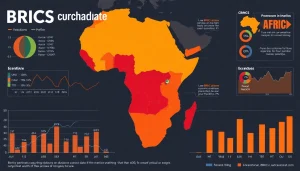How to Find Competitor Customers Effectively: Step-by-Step Guide
Understanding the Importance of Finding Competitor Customers
In the fast-paced world of business, understanding your competition is not just beneficial—it’s essential. Knowing who your competitors’ customers are can provide valuable insights that can shape your marketing strategy, enhance your product development, and ultimately drive your business growth. By learning how to find competitor customers, you align your offerings more closely with the needs and preferences of the market, allowing for more effective outreach and engagement.
Why Knowing Your Competitors’ Customers Matters
Understanding your competitors’ customers gives you a competitive edge. You gain insights into their motivations, preferences, and behaviors. This information allows you to refine your value proposition, tailor your marketing strategies, and create products that resonate more deeply with potential customers. Knowledge of competitor customers can illuminate market gaps and emerging trends that your business can capitalize on.
Common Challenges in Identifying Competitor Customers
Despite the advantages, identifying competitor customers can pose several challenges:
- Data Availability: Reliable data can be sparse, and many businesses do not disclose detailed customer insights.
- Competitive Secrecy: Competitors may intentionally obscure their customer segments to protect their strategies.
- Sifting Through Noise: The sheer volume of information available can make it difficult to extract actionable insights.
Benefits of Competitive Customer Analysis
Conducting a competitive customer analysis can yield significant benefits:
- Targeted Marketing: By understanding the traits of your competitors’ customers, you can tailor your marketing campaigns to attract similar audiences.
- Improved Customer Retention: Gaining insights into competitor customer satisfaction can guide you in improving your own customer service and retention strategies.
- Innovation Through Analysis: Learning what excites or frustrates competitor customers can inspire you to innovate and offer superior alternatives.
Research Techniques to Find Competitor Customers
Utilizing Online Tools for Market Analysis
The digital landscape offers a multitude of tools that can help in identifying competitor customers:
- SEO Tools: Platforms like SEMrush and Ahrefs can reveal which websites link to your competitors, indicating where they drive traffic and who their audience might be.
- Social Listening Tools: Tools such as Brandwatch or Hootsuite allow businesses to analyze social media conversations, helping to identify customer interests and pain points.
- Analytics Tools: Google Analytics and similar services can help you understand audience behavior and traffic sources for competitors.
Leveraging Social Media Insights
Social media platforms provide a treasure trove of data regarding customer preferences and behaviors. By observing which demographics engage most with your competitors’ content, and analyzing their comments and interactions, you can build a clearer picture of who their customers are. Using tools like Facebook Insights or Twitter Analytics can enhance your understanding further.
Analyzing Publicly Available Data
Many companies publish invaluable information through annual reports, press releases, and case studies. By analyzing this publicly available data, you can glean insights into their customer demographics and market strategies. Trade publications and industry reports can also provide benchmarks and insights relevant to competitor customers.
Implementing Effective Data Collection Strategies
Surveys and Questionnaires: Gathering First-Hand Information
One effective way to gather insights about competitor customers is by conducting surveys or questionnaires. By targeting audiences that may use products or services similar to yours, you can obtain direct feedback about their preferences and experiences. Ensure questions are clear and concise, and consider offering incentives for completion to increase response rates.
Engaging with Industry Reports and Studies
Industry reports often synthesize research that outlines customer behavior trends across various sectors. Engaging with these documents provides authoritative insights that can guide your understanding of competitor customers. Resources such as IBISWorld and Statista are excellent starting points for accessing relevant data.
Using CRM Tools for Competitor Insights
Customer Relationship Management (CRM) tools can be leveraged to track and analyze customer behavior trends. By inputting data about your customers and potential customers, you can segment them better and deduce the possible characteristics of competitor customers. Software like Salesforce or HubSpot can aid in gathering and analyzing this data efficiently.
Analyzing Customer Segments of Competitors
Identifying Key Customer Demographics
Understanding the demographics of competitor customers is crucial. Key factors to analyze include age, gender, income levels, geographical location, and education. This demographic analysis can inform your marketing strategies and product offerings, ensuring they align with the target audience’s characteristics.
Understanding Customer Behavior and Preferences
In addition to demographics, it is essential to understand the behavioral aspects that characterize competitor customers. This includes their buying habits, reasons for brand loyalty, and feedback regarding competitors’ products. Tools such as sentiment analysis can help gauge customer attitudes, both positive and negative, towards your competitors, providing actionable insights.
Creating Customer Personas Based on Competitor Analysis
Customer personas are fictional characters created based on research to represent the different user types within a targeted market. By developing these personas based on competitor customer analysis, you can better tailor your marketing campaigns. A well-constructed persona encompasses demographics, interests, challenges, and purchasing motivations.
Strengthening Your Strategy Using Competitor Insights
Incorporating Findings into Your Marketing Plan
Once you’ve gathered insights into competitor customers, it’s important to incorporate these findings into your marketing plan. Develop tailored strategies that appeal directly to these identified segments, using targeted messaging and appropriate channels to deliver your campaigns effectively.
Adjusting Product Offerings Based on Competitor Customers
Use the insights gained from competitor analysis to refine or adjust your product offerings. If competitor customers express a need or desire that is currently unmet, consider developing a solution or adjusting your existing products to better serve this segment. This approach can help you attract new customers who are seeking alternatives to what is currently available.
Measuring Success and Adapting Strategies
Finally, ensuring that your strategies are reactive and adaptable is crucial. Implementing tracking measures to evaluate the success of your strategies is imperative. Metrics could include engagement rates, conversion rates, and overall customer satisfaction. This feedback will help you continuously adapt your approach based on how competitor customers respond.








Post Comment